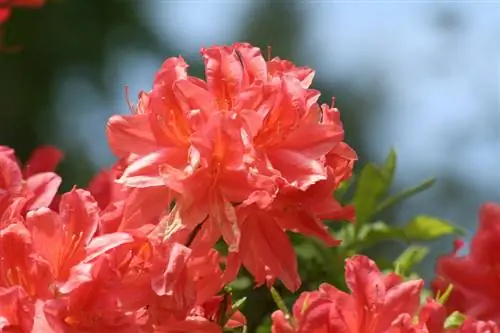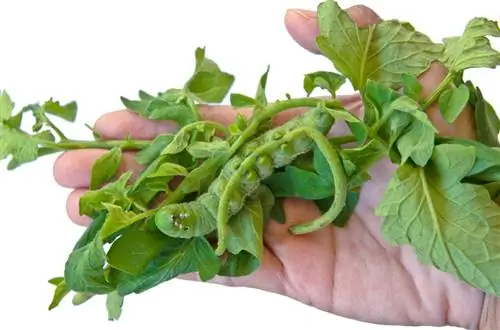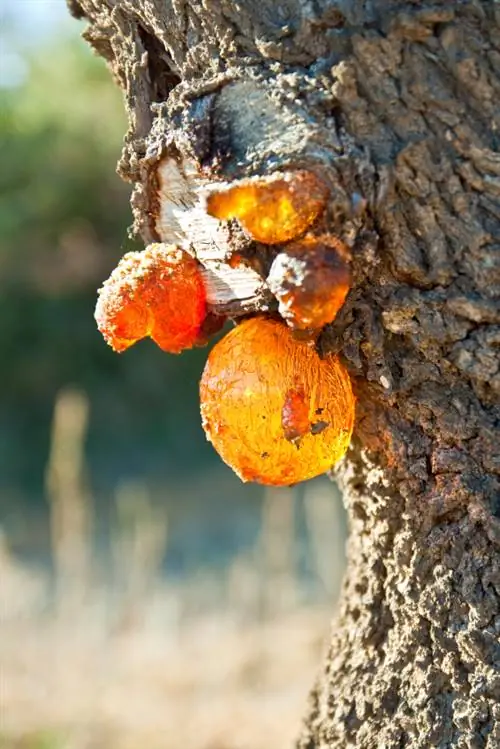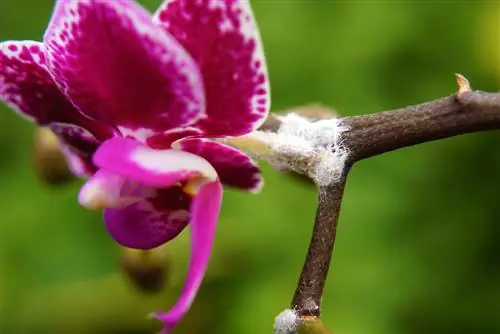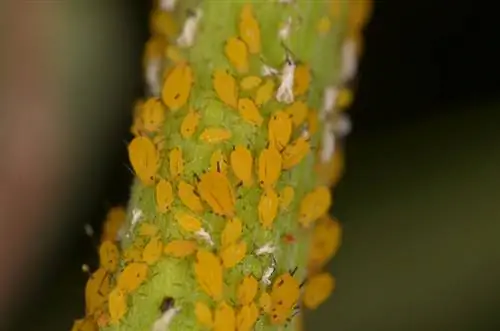- Author admin [email protected].
- Public 2024-01-05 20:48.
- Last modified 2025-01-23 11:19.
Rhododendrons attract numerous insects. But pests also prefer the plant. You can find out what these are and how you can effectively combat the pests here
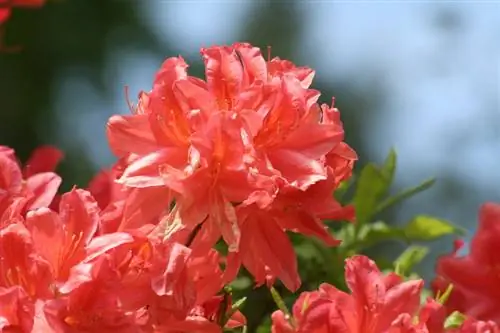
What pests attack rhododendrons and how do you fight them?
Rhododendron pests include aphids, whitefly, black weevil beetles, bedbugs and leafhoppers. To combat it, promote natural enemies, remove infected leaves, use nematodes to control larvae, use spray after flowering and regularly treat the undersides of leaves for cicadas.
- Aphids
- Whitefly
- Black weevil beetle
- Bugs
- Cicadas
Aphids suck on young shoots
Aphids can be found on young shoots. Their sucking deforms the leaves. The pest will then be visible at the latest. In addition, black sooty mold fungi attack the damaged leaves.
Whitefly sits and sucks on the underside of leaves
Whiteflies or whiteflies attack the undersides of leaves en masse. When touched, they fly up immediately.
Countermeasures for lice:Support the natural aphid killers in your garden. Such as wasps, ladybirds, ground beetles, hoverflies and lacewings. When using sprays, pay attention to products that are gentle on beneficial insects.
Bigmouth weevil beetle wanders over the leaves at night
The dark-colored, approximately one centimeter large, dreaded weevil wanders over the leaves at night and nibbles off the edges. The larvae of the beetle pose a greater danger. They develop from the eggs in the soil and eat roots, so that the plant dies in a short time.
Countermeasures for weevils and larvae:
Chemical measures are of little use because the beetle only comes at night. Distribute rotten boards, tree stumps or old roots between plants. The beetles hide underneath and you can dispose of them in the morning. The larvae can be fought in the soil with great promise. Roundworms that are simply poured into the soil have proven particularly effective. Note that the nematodes require soil temperatures of at least 10-12°C and consistent soil moisture.
Bugs use rhododendrons as breeding grounds
The rhododendron web bug or skin bug lays its eggs on the underside of the upper leaves in late summer. The bugs cover their brood with a visible droplet of black-brown feces. Wingless young bugs emerge from this in May. They appear as adult, winged animals in July. Hardy rhododendron varieties with felty hairs on the undersides of the leaves are spared from the bugs!
Countermeasures for bedbugs:
The best time to spray to combat the offspring of larvae is immediately after flowering. Make sure that the undersides of the leaves are wetted intensively.
Cicadas cause rhododendron buds to die
What is grass green with striking red stripes on the back? The rhododendron cicadas. From September onwards they lay their eggs in the buds. Dangerous side effect: They transmit the fungal spores of the bud tan. These penetrate the buds during egg laying. The resulting dark-colored buds do not fall off, but are covered with a fungal veil in spring.
Countermeasures for cicadas: Not the fungus but the cicadas
can be successfully eliminated. Most effective by regularly spraying the undersides of the leaves early in the morning. As long as the insects are still cold and inactive. Break out the dark, fungal buds from February onwards and dispose of them with household waste.
Tips & Tricks
When using spray, please note that the liquid does not adhere well to the smooth rhododendron leaves. Add a few squirts of dishwashing liquid to the spray to remove the surface tension from the water.

